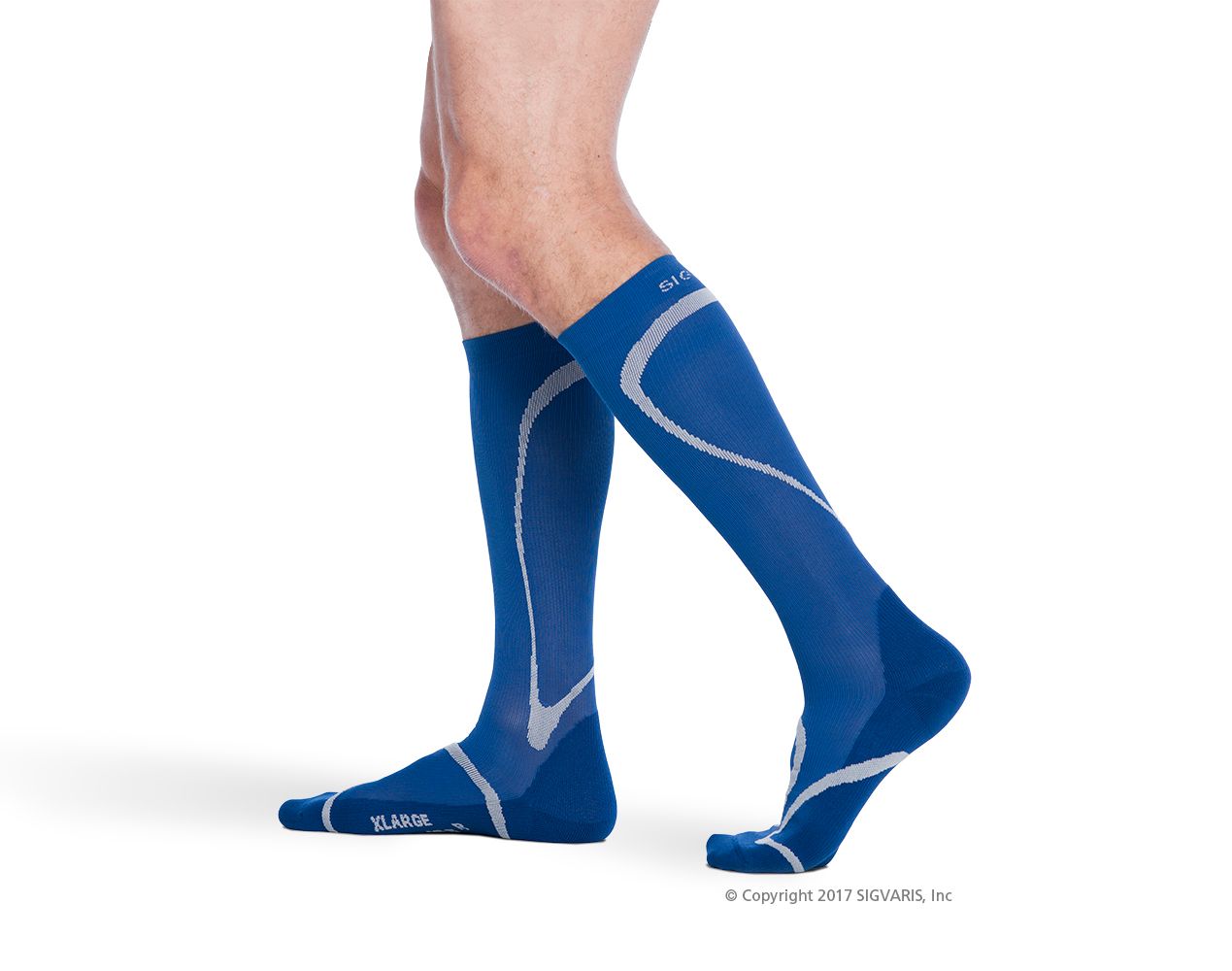COMPRESSION STOCKINGS

Medical compression therapy
Medical compression therapy consists of applying a type of elastic device, mainly on the limbs, to exert a controlled pressure on them. By compressing the limbs or other body regions, the medical compression device squeezes the vein walls together, thereby improving overall circulation and supporting blood flow back towards the heart.
In addition, it helps to reduce swelling and formation of edema in edematous tissues by reducing the capillary leakage into the tissue and supports the lymphatic drainage of interstitial fluid. Medical compression provides significant relief of leg aching, pain, the feeling of swelling and heaviness, and other venous and lymphatic symptoms.
Different materials, forms, and styles available
Medical compression can be applied in different pressure degrees, forms, and styles and materials based on the symptoms and needs of individuals. Round- and flat-knitted garments (stockings, leggings, shorts, tights, pantyhose, arm sleeves, gloves, etc.), wraps, and bandages are available.
The effects of medical compression
Effect on blood circulation
The controlled pressure exerted by medical compression stockings reduces the diameter of major veins, thereby increasing the velocity and volume of blood flow. Consequently, medical compression improves blood transport from the extremities towards the heart, reduces blood reflux and stagnation, and provides better drainage of the deep venous system, which all helps to increase and therefore improve the circulatory rate.
Effect on edematous tissue
Under medical compression, the balance in blood exchange is improved by reducing capillary leakage of fluid in the interstitial tissue. This leads to a better reduction of edema. A beneficial massaging effect of certain medical compression textiles, leading to a softening of hardened or fibrotic tissue, has been reported.
In addition, medical compression recreates conditions beneficial for the healing of chronic inflammatory disorders (e.g. cellulitis, erysipelas, venous leg ulcers, etc.), through reduced proâ€inflammatory cytokine levels and higher levels of the antiâ€inflammatory cytokines. Also, improved skin microcirculation has been reported.
What is the difference between compression stockings and support stockings?
The term support stockings is widely known and often also used for medical compression wear. The principles of the two types of stockings are different, though.
Support stockings exert passive resistance to swelling, while compression stockings apply active pressure on the veins of the leg. This prevents them from dilating and facilitates venous return.
Medical compression garments are produced under strict medical and technical specifications to guarantee adequate ankle pressure and graduated compression along the leg.


